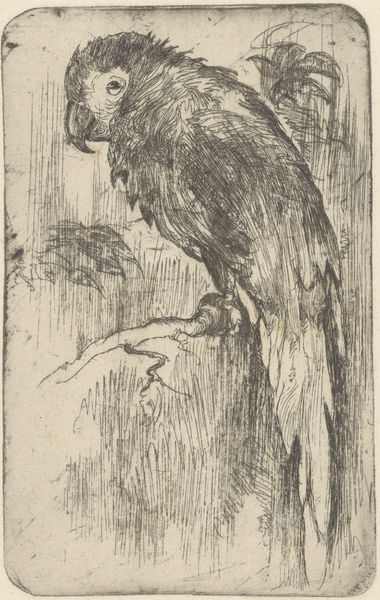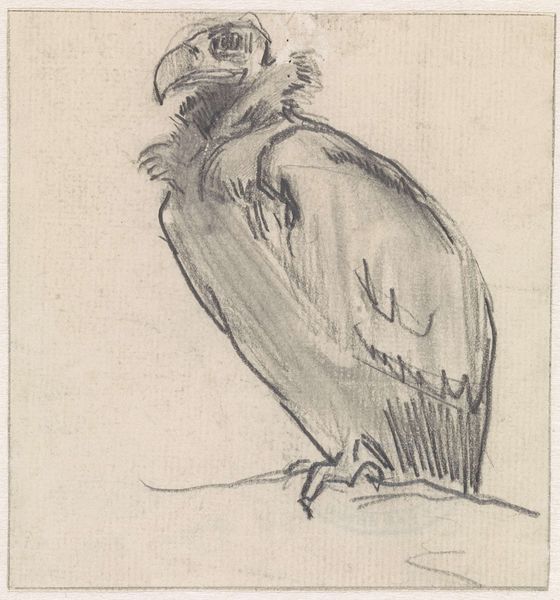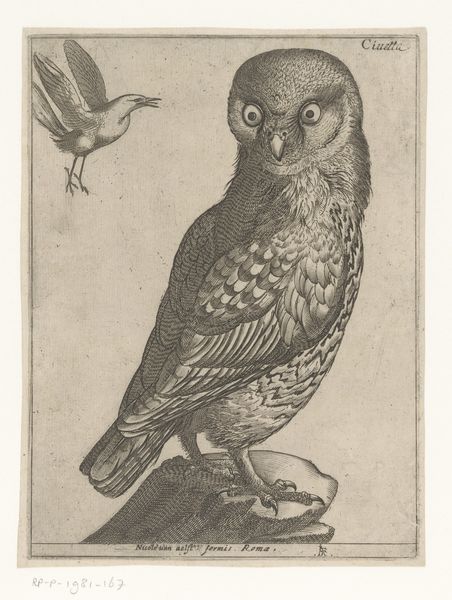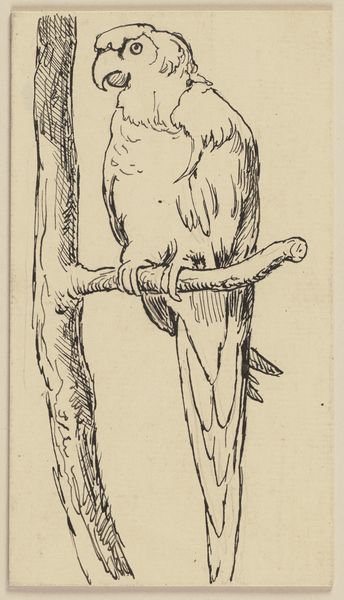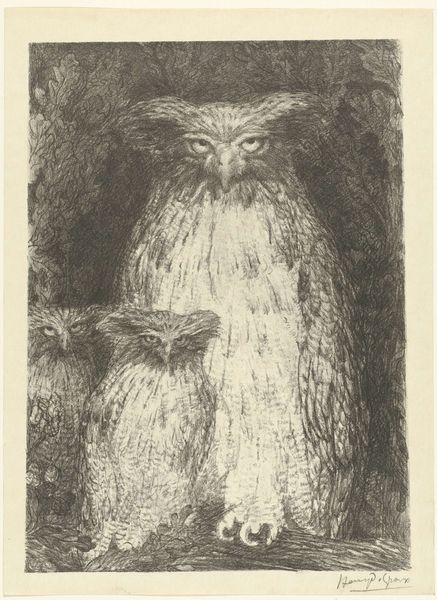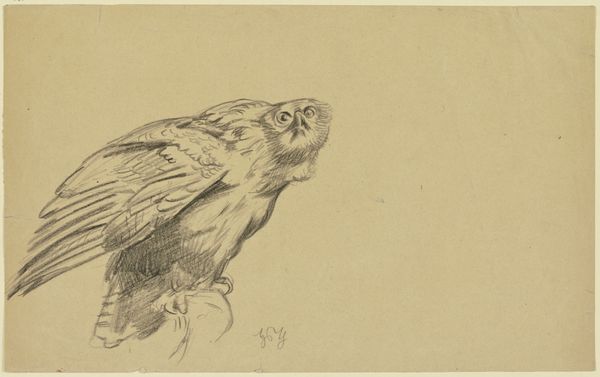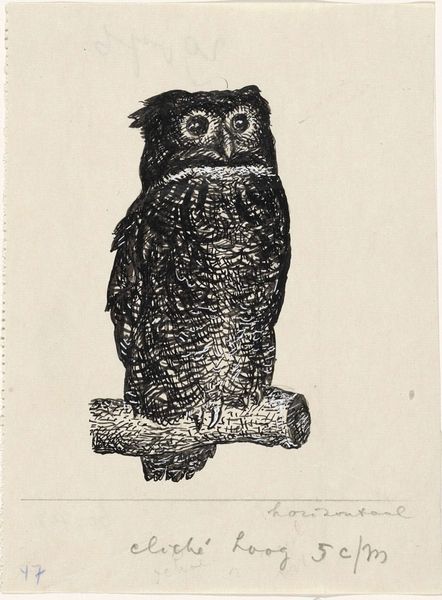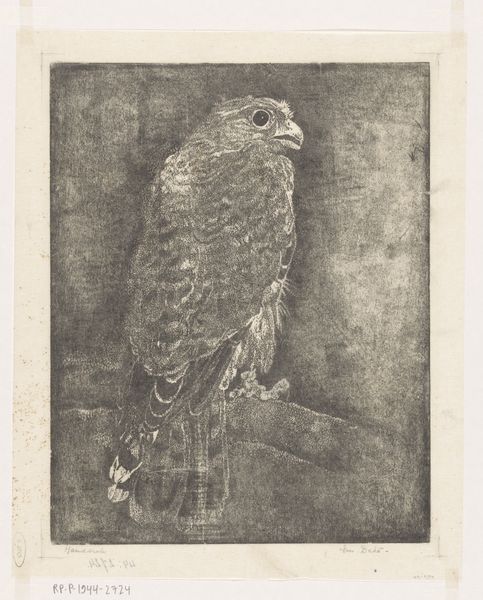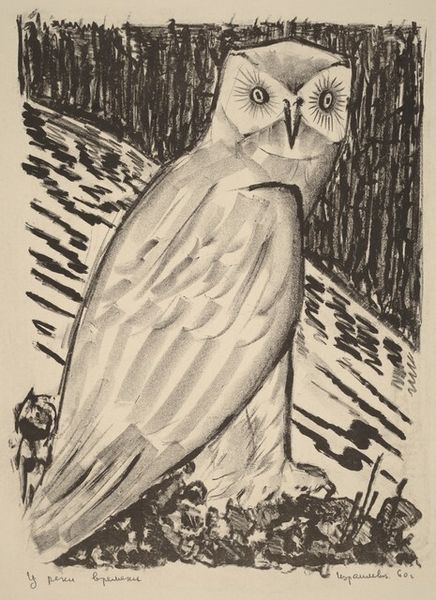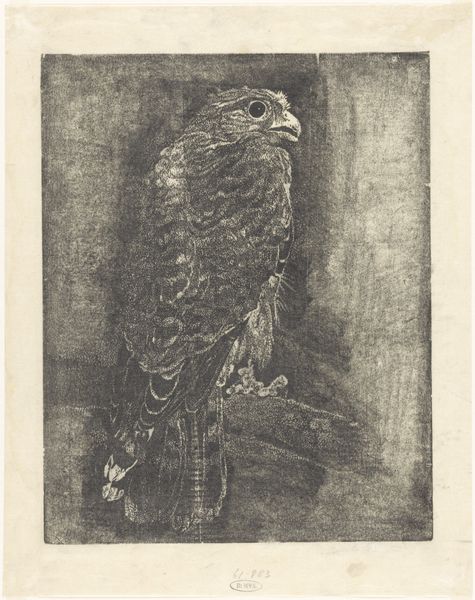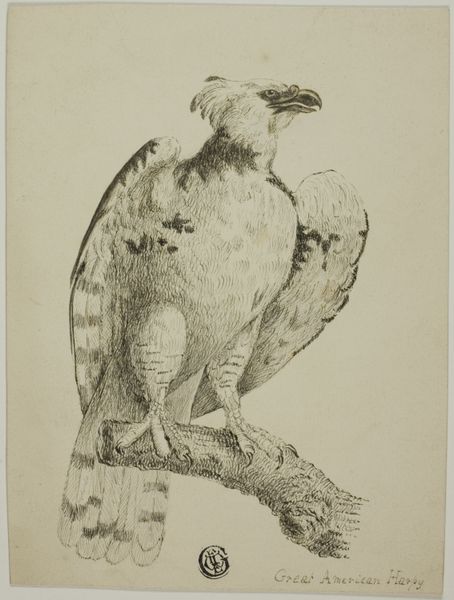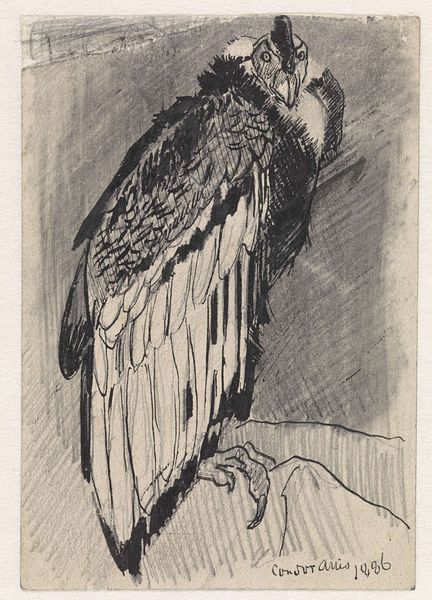
drawing, print, etching, ink
#
portrait
#
drawing
#
animal
# print
#
etching
#
ink
Dimensions: 128 mm (height) x 83 mm (width) (plademaal)
Curator: Here we have Frans Schwartz's "Prøveplade: en ugle," which translates to "Trial Plate: An Owl." The artwork, crafted in 1903, is an etching using ink and demonstrates Schwartz’s skill as a printmaker. Editor: There’s a wonderful simplicity to it. It captures the essence of the owl—a sense of watchful intensity, yet it also feels a bit vulnerable in its stillness. It's rather monochromatic, lending a stark elegance to the work. Curator: Considering its socio-historical context, depictions of animals—particularly ones like the owl laden with symbolism of wisdom, knowledge but also death—provided artists space to investigate psychological portraiture in indirect, arguably, less policed ways. They acted as proxies for the human condition. Editor: I find it compelling that the artist chose printmaking. How was Schwartz received within the artistic circles of his time, especially given his choice of subject and medium? Did this align with broader artistic trends, or was he diverging, and perhaps even making a social commentary on the use of these powerful figures within portraiture traditions? Curator: Well, printmaking had a democratizing effect in the late 19th and early 20th centuries, making art accessible to a wider public, so depicting accessible but noble subjects might be read as a tool to popularize intellectual traditions for the emerging bourgeois classes, while also critiquing elitist circles of arts who would typically avoid printed art, preferring traditional media, for example, oil and sculpture. Editor: So it’s a complex interplay between artistic choice, accessibility, and a subtle societal nudge. Fascinating how a seemingly straightforward depiction of an animal opens up discussions about class and representation. Curator: Precisely! Schwartz, in rendering this nocturnal creature, pushes the conversation about visibility and intellectual pursuits forward. We shouldn't overlook art history and theory in how we view what this artwork stands for. Editor: It is an important reminder to challenge preconceived notions. It truly gives one something to contemplate!
Comments
No comments
Be the first to comment and join the conversation on the ultimate creative platform.

